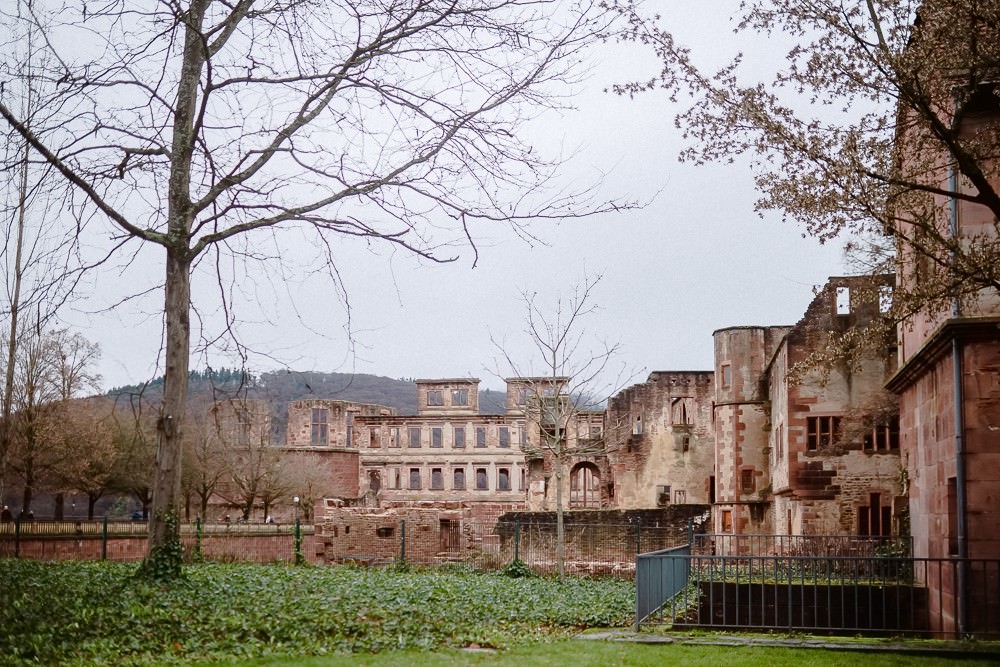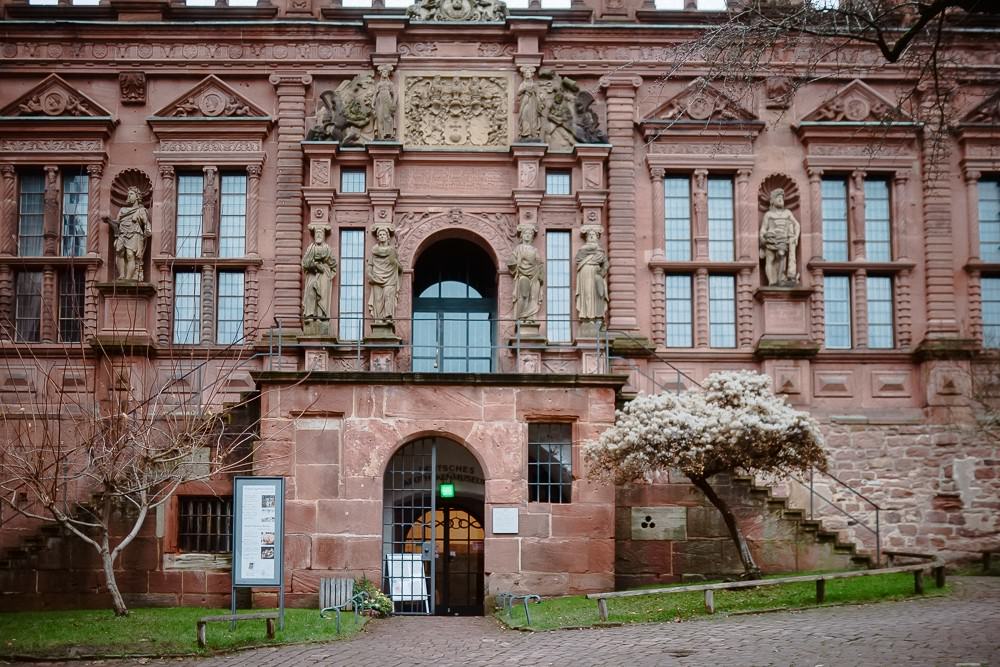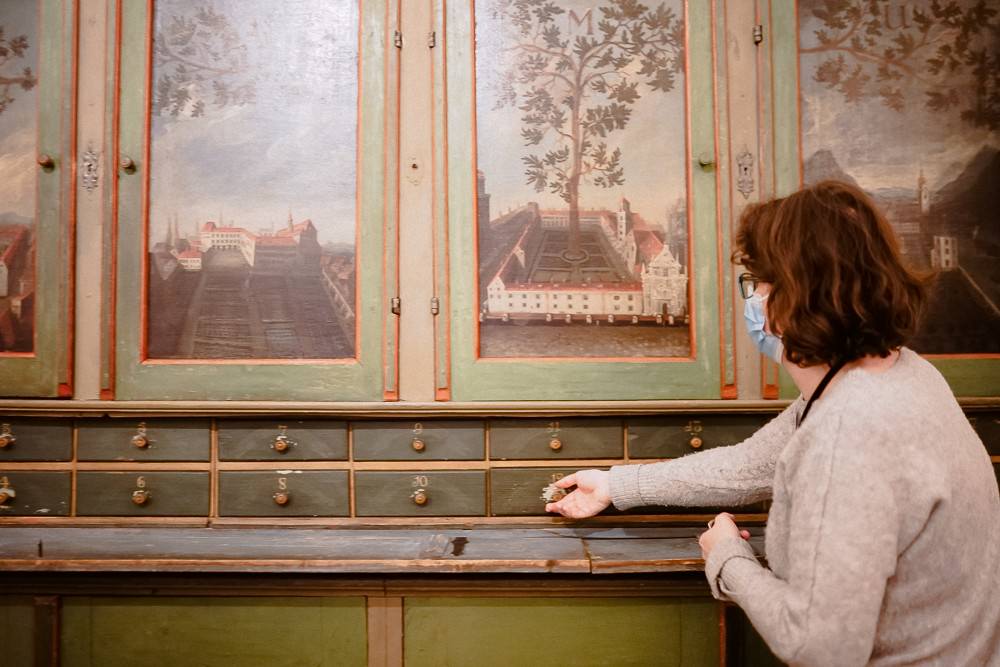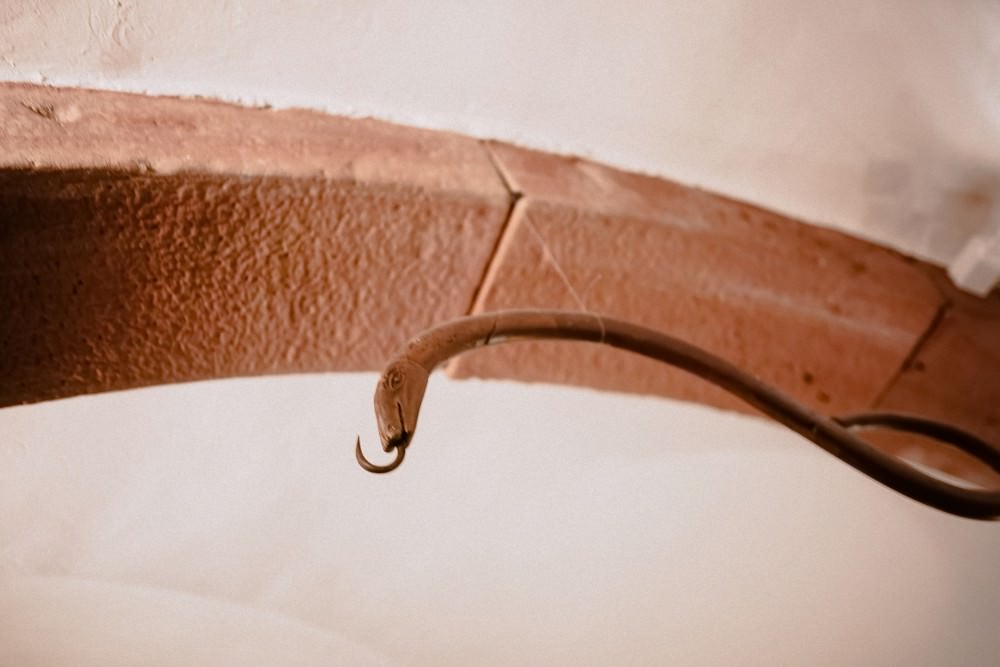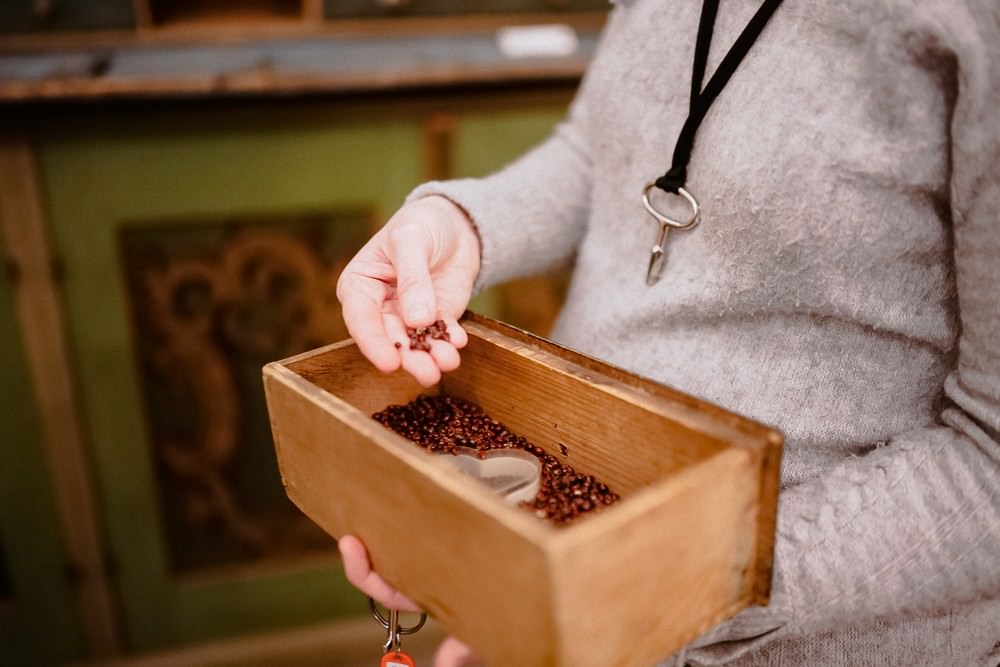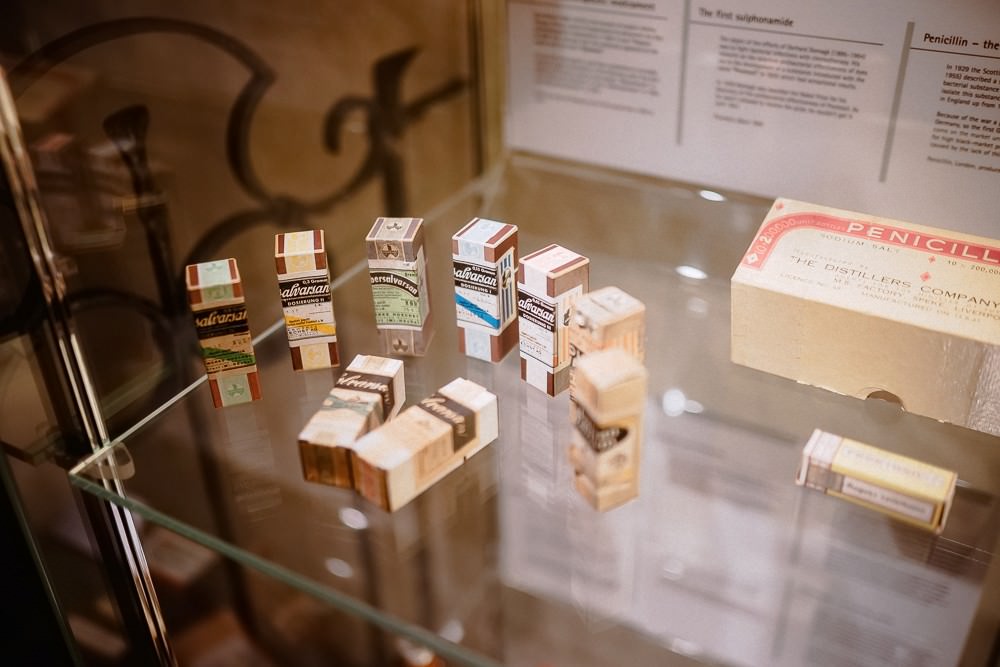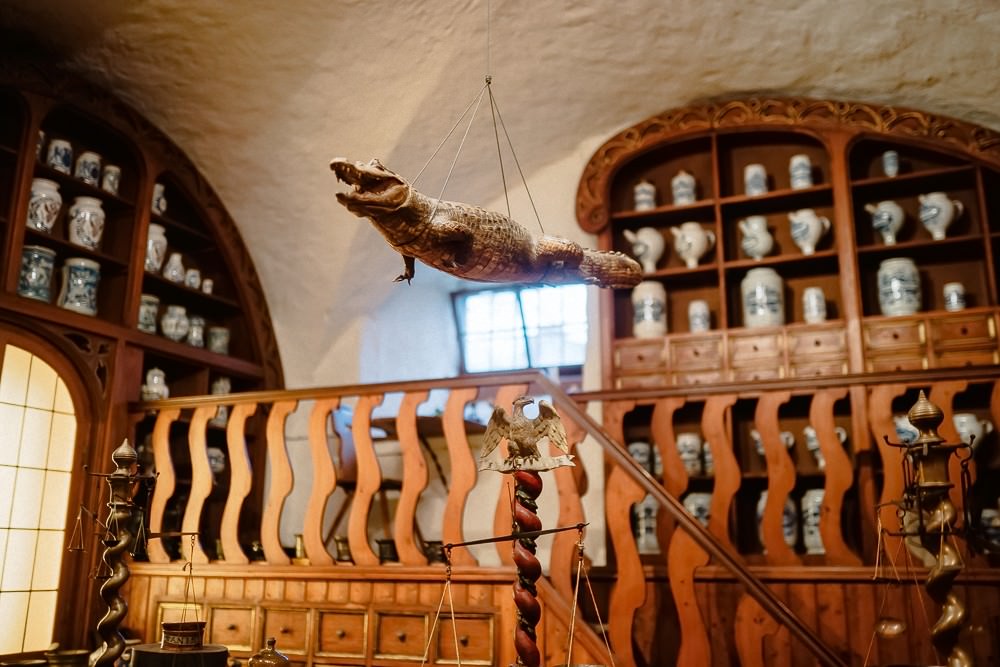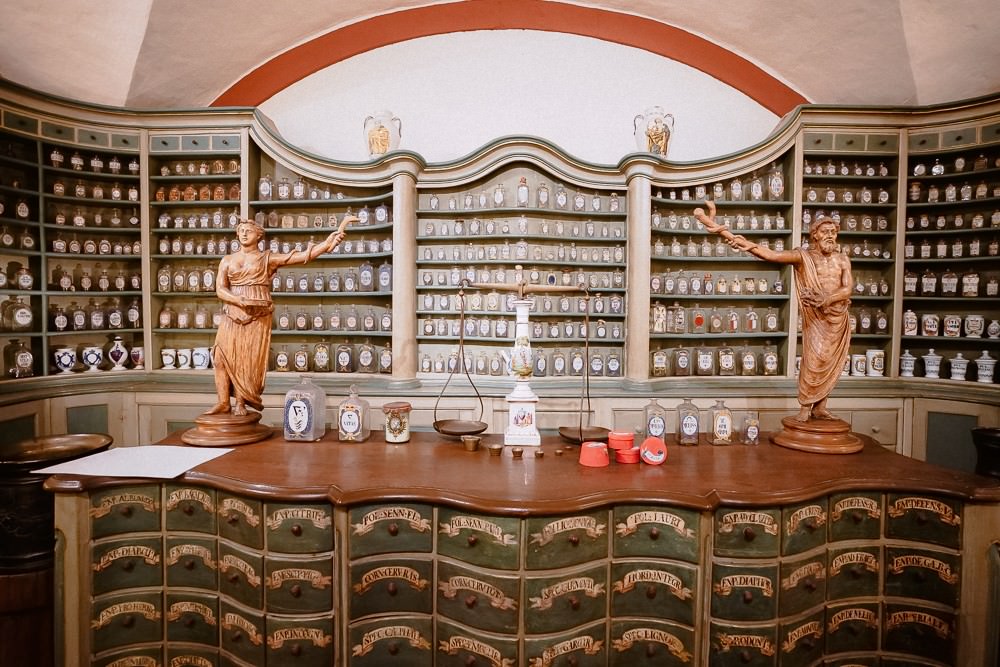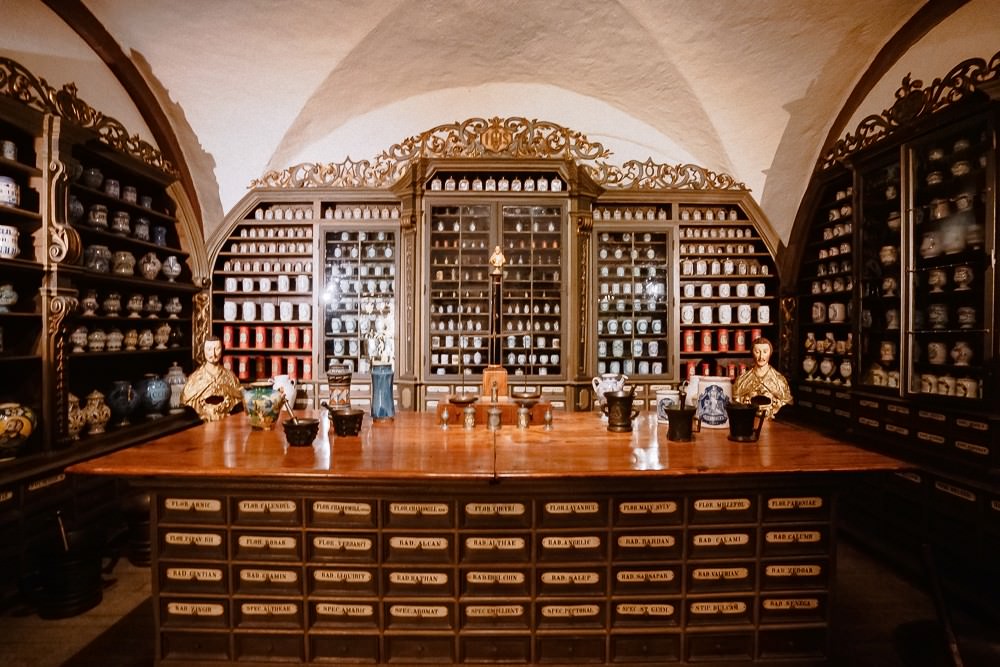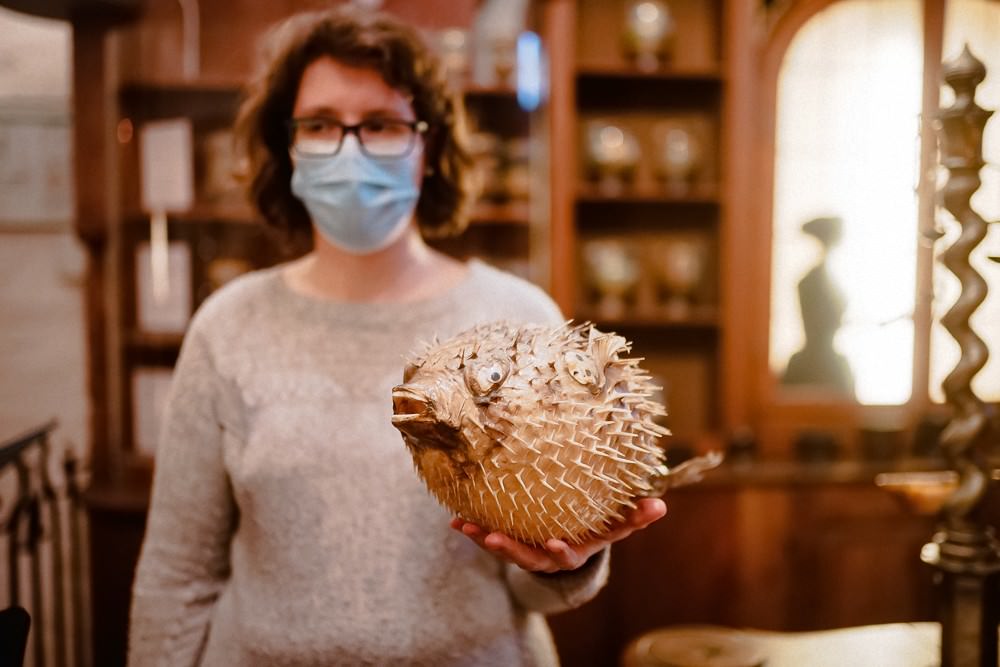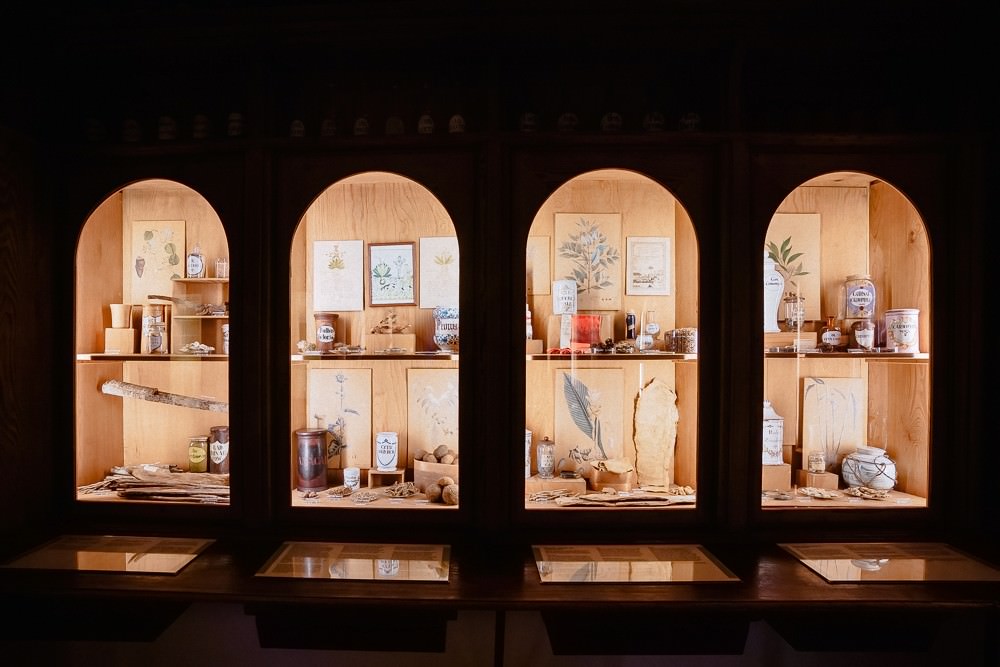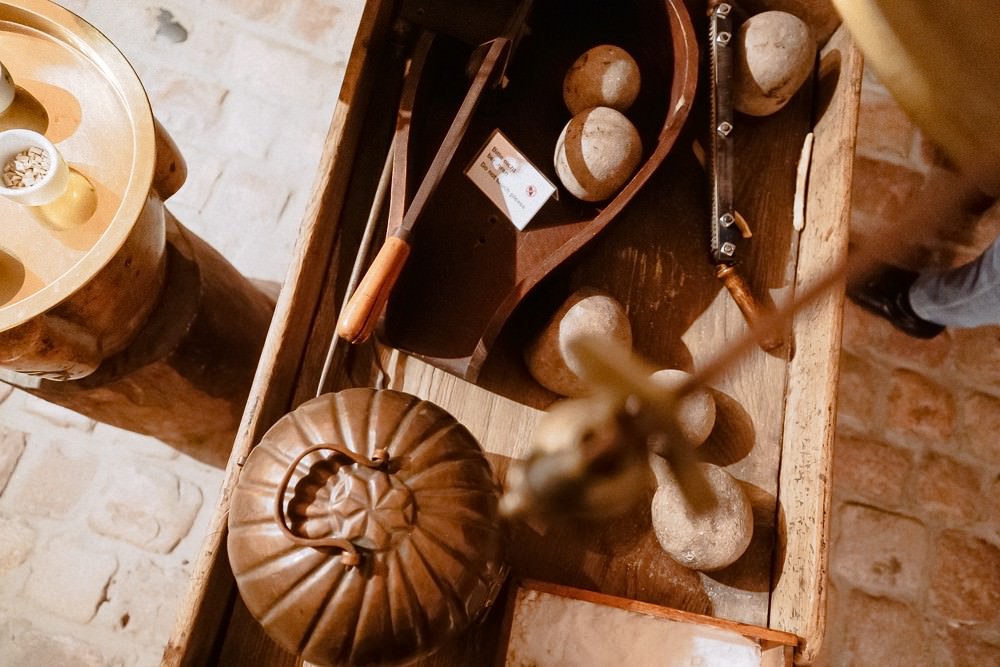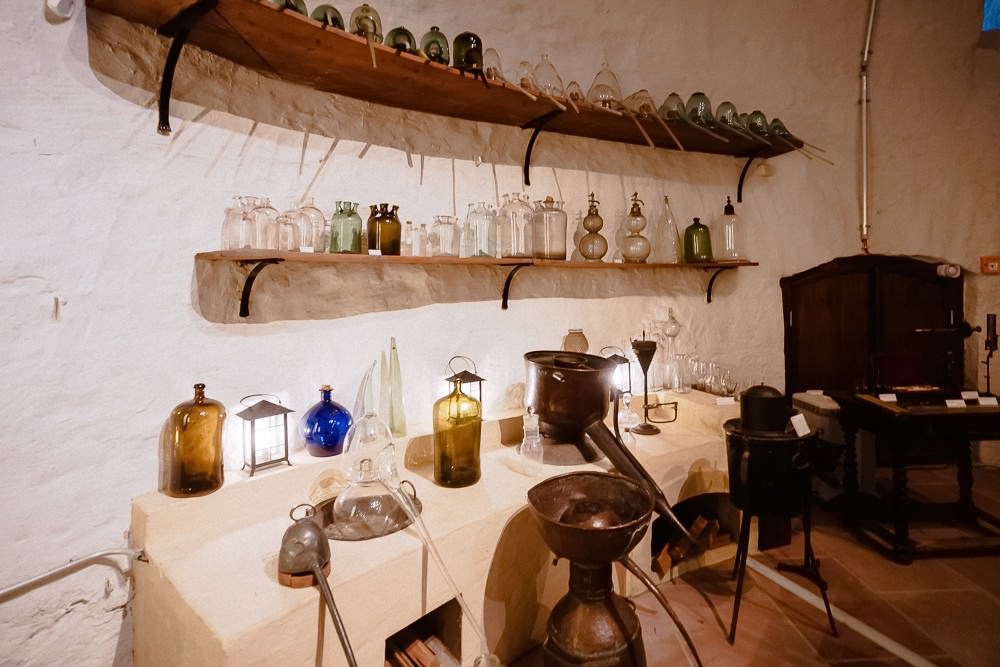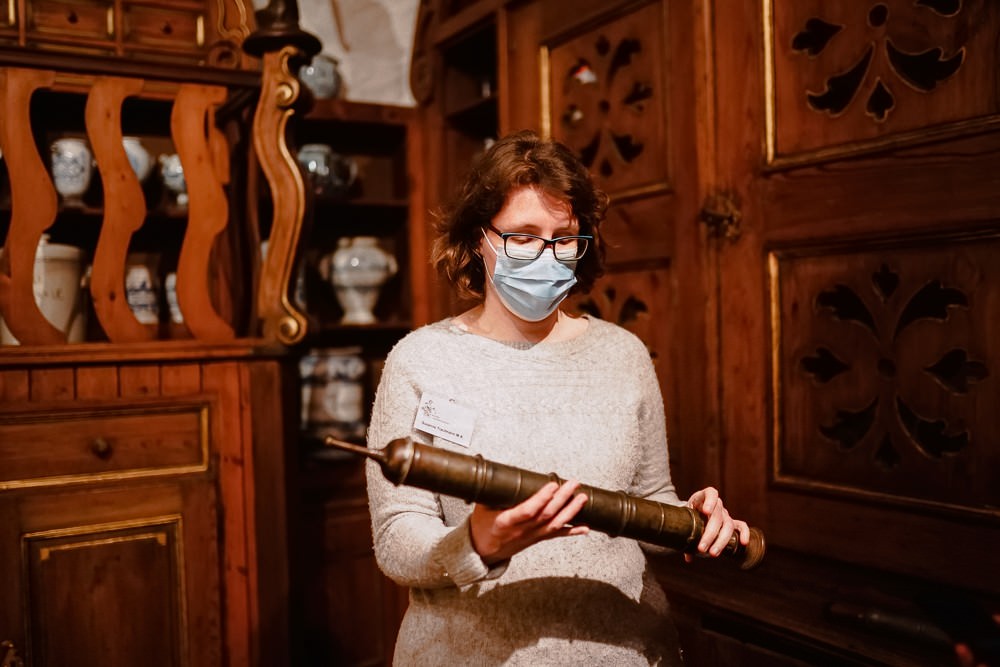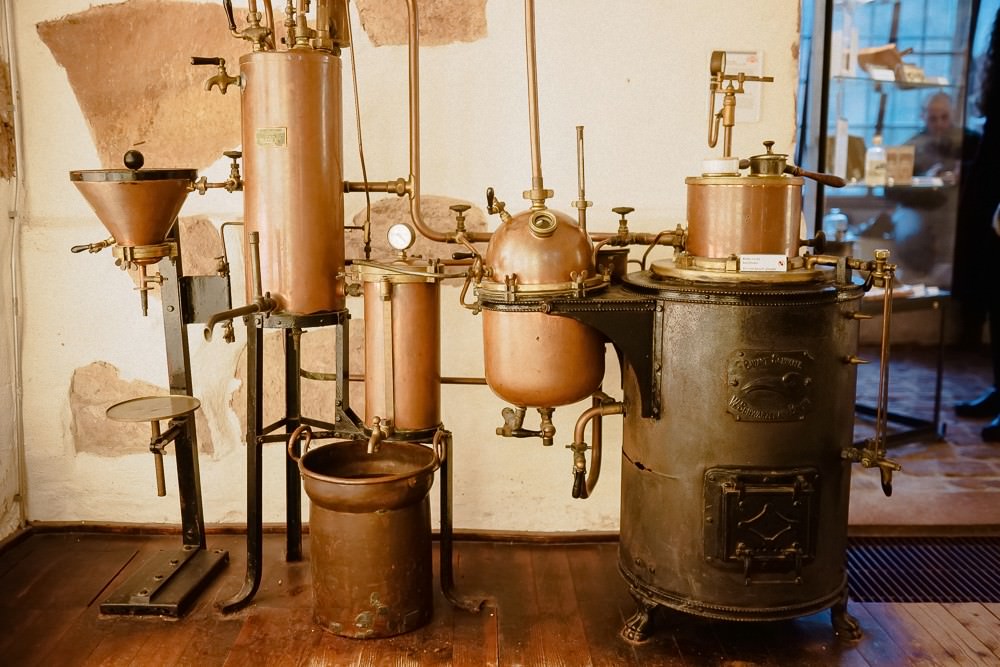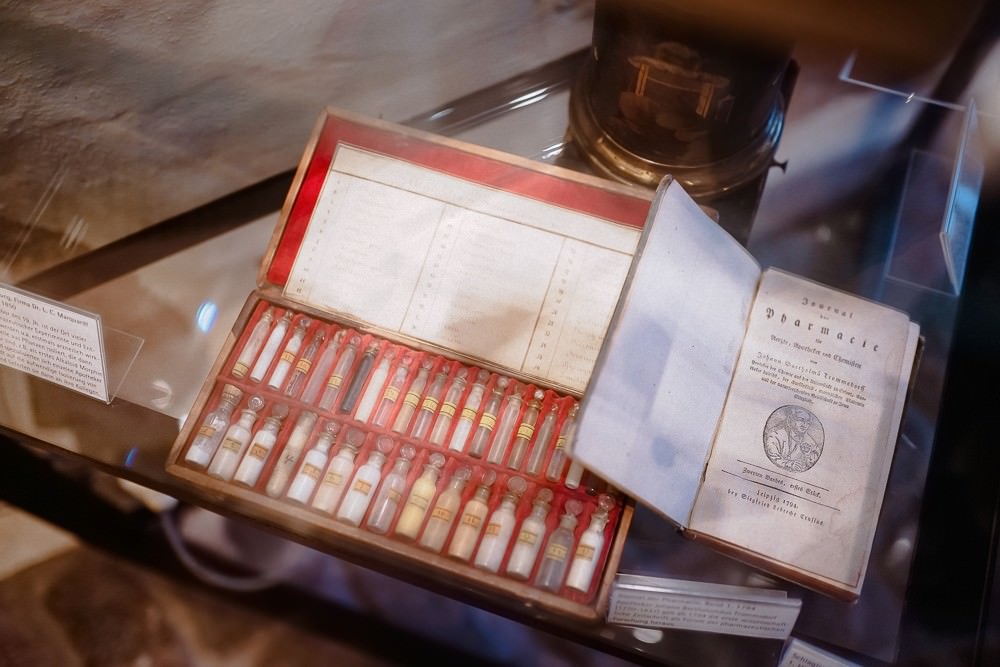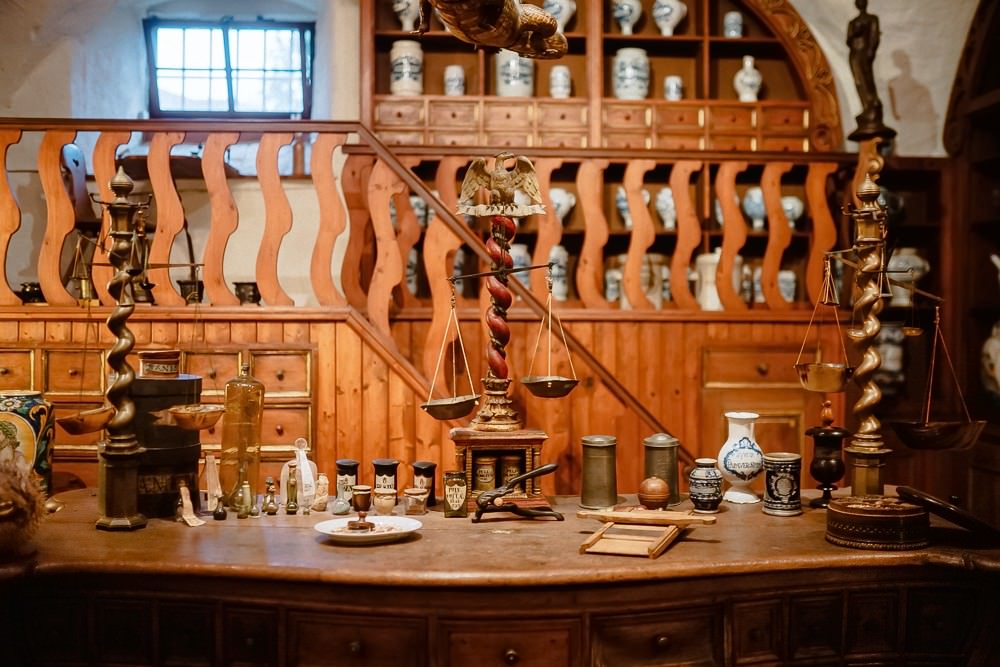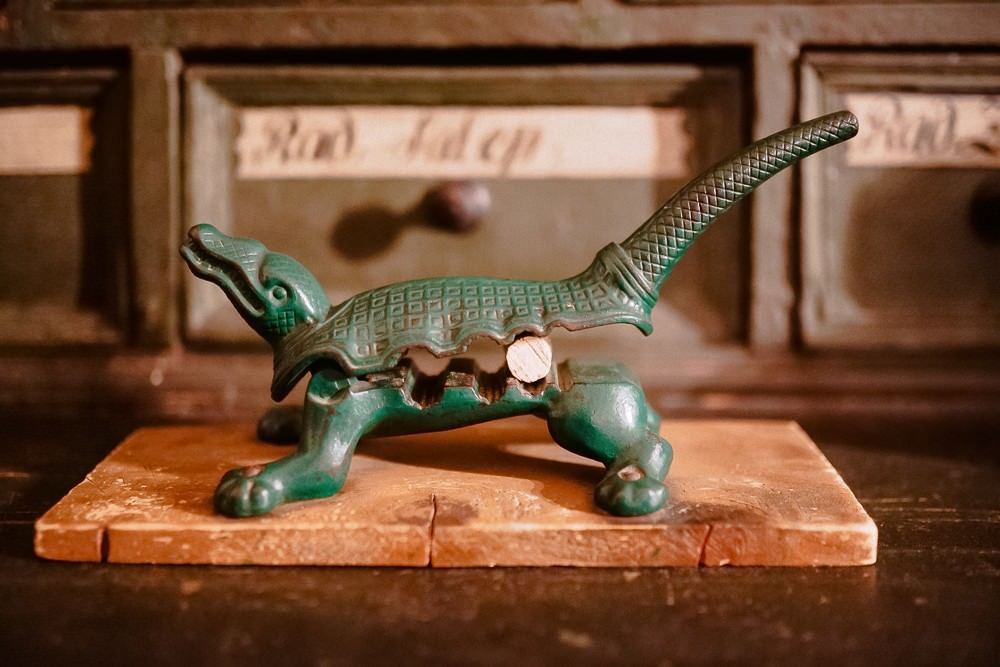Ordinary pepper, powdered unicorns, human skullcaps. The exhibits brought together by the German Pharmacy Museum in Heidelberg Castle bear witness to the history of pharmacy—a world that is mundane, magical and bizarre all rolled into one.
How much magic is there in medicine? “Quite a bit” you realize upon a visit to the German Pharmacy Museum in Heidelberg Castle. Snakeskin, mandrake and bezoar are stored in glass cabinets, cupboards and beautifully decorated jars. You soon feel like you just stepped off the Hogwarts Express rather than the mountain railway in Heidelberg. Heavy mortars, long-nosed distilling devices and the thick stonewalls contribute to this. When you finally stand in front of the two-metre-long horn of a supposedly real unicorn, you are literally waiting for grouchy Professor Snape from one of the Harry Potter volumes to turn the corner.
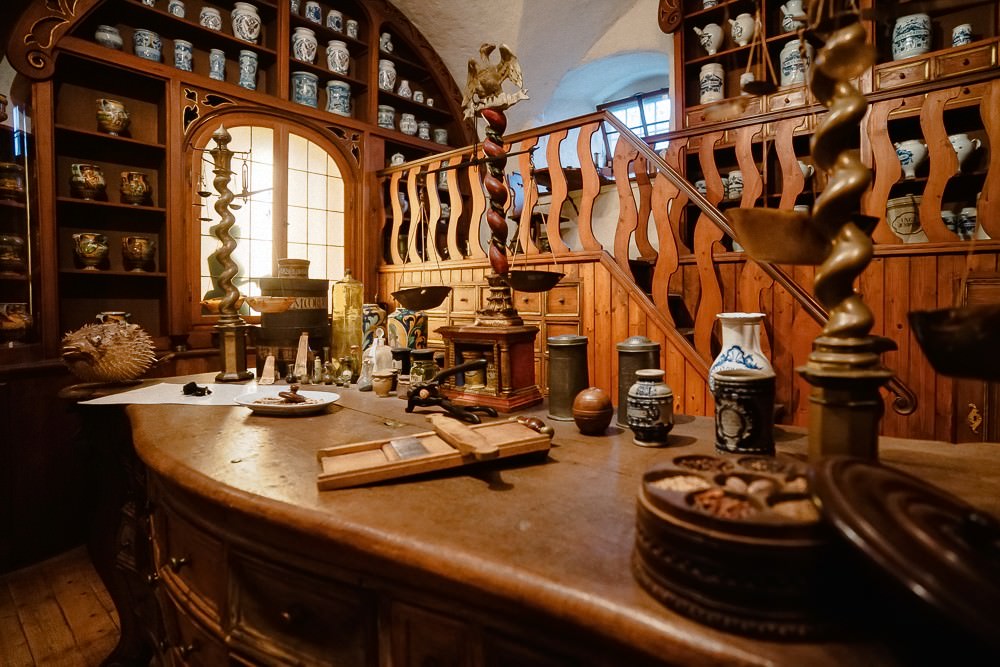
Fortunately, the only person waiting for the visitors this morning is Suzanne Trautmann—who is also in a cheerful mood. For more than ten years, she has been guiding visitors through the German Pharmacy Museum located in the Ottheinrichsbau, Ludwigsbau and Apothekerturm wings of the castle. “Magic and medicine have always been closely connected,” Suzanne acknowledges. ‘Mandrake and unicorn’ is the logical motto of the overview tour of the exhibition. The museum offers some 20 other guided tours, titled ‘plague breath and heavenly scent,’ ‘peppered medicine’ or ‘murder from a delicate hand,’ among others. In addition, you can book organised children’s birthday parties, workshops to acquire skills like pill-making as well as evening receptions with the castle’s catering service on offer. With 700,000 visitors per year, the museum is one of the most popular ones in Germany. According to the information published by it, it has the most extensive collection on the history of pharmacy in the world, displaying exhibits from four centuries. A garden has also been part of the museum since 2019 (read more about ‘green pharmacy’ in the related story about Weinheim). The museum was founded in Munich in 1937, where part of the collection was destroyed during the Second World War. The parts that remained intact first moved to Bamberg and then to Heidelberg in 1957. The museum is sponsored by the non-profit Deutsche Apotheken Museum-Stiftung foundation, supported by the Förderverein Deutsches Apotheken-Museum association and other donors.

Suzanne’s favourite exhibit nestles against the stonewall directly behind the reception counter: an apothecary’s cabinet from the Baroque period, which makes it about 300 years old. It used to stand in a monastery in Schongau, Bavaria. Suzanne opens the elaborately painted doors with care. Around 200 vials and jars come to light. They are painted, sealed with leather skins or corks, and are carefully labelled. ‘Bezoar’ is written on two vessels that look like drinking cups, ‘Serpent’ on another and ‘Cinabr.’ on one containing a red powder. The museum guide points to a shelf filled with small bottles. “Essential oils. It’s an absolute rarity that they have been preserved after such a long time.” Other active agents have not been this lucky and have been more or less affected by the passing of time. While the embossed seal can still be seen on some slightly deformed tablets, the globules next to them have melted into a single lump.
